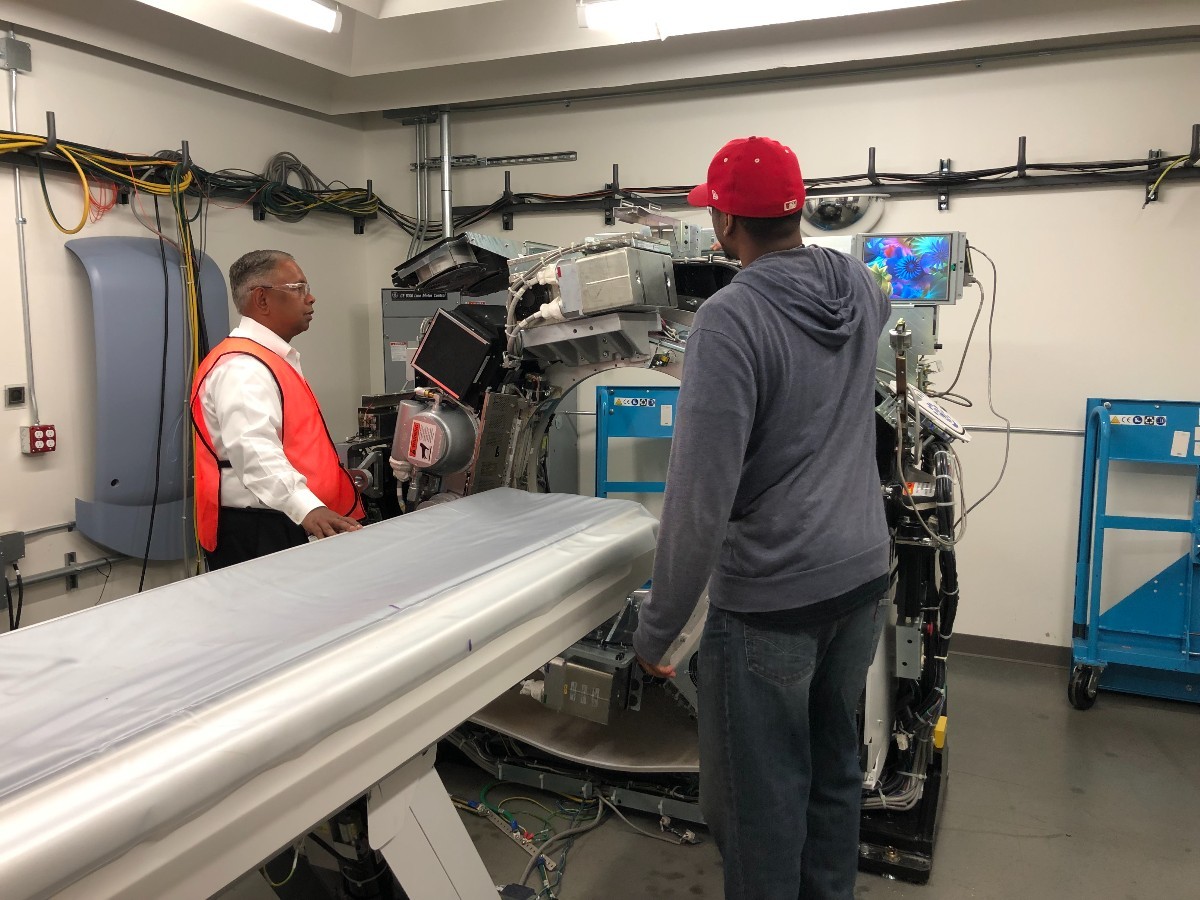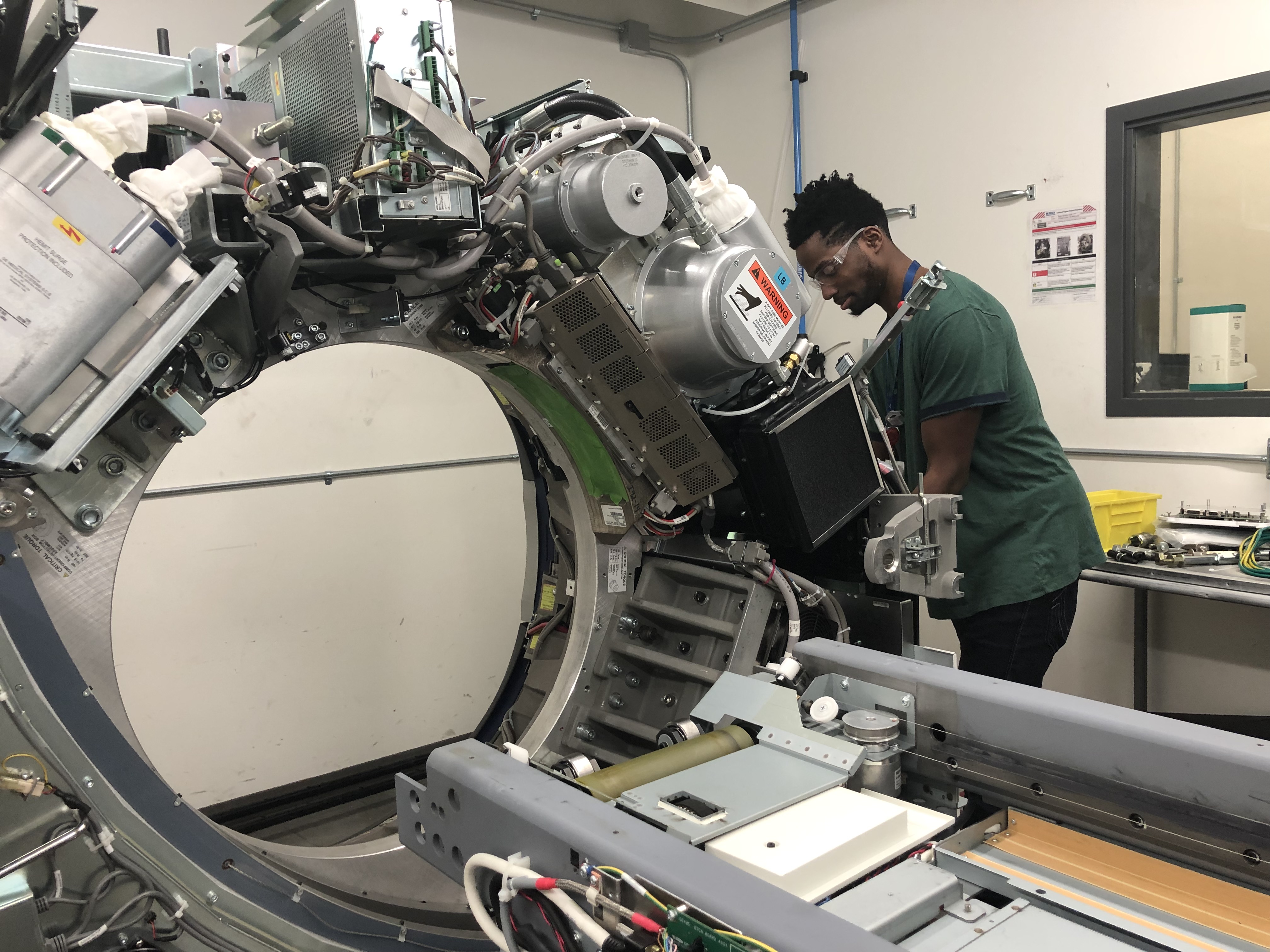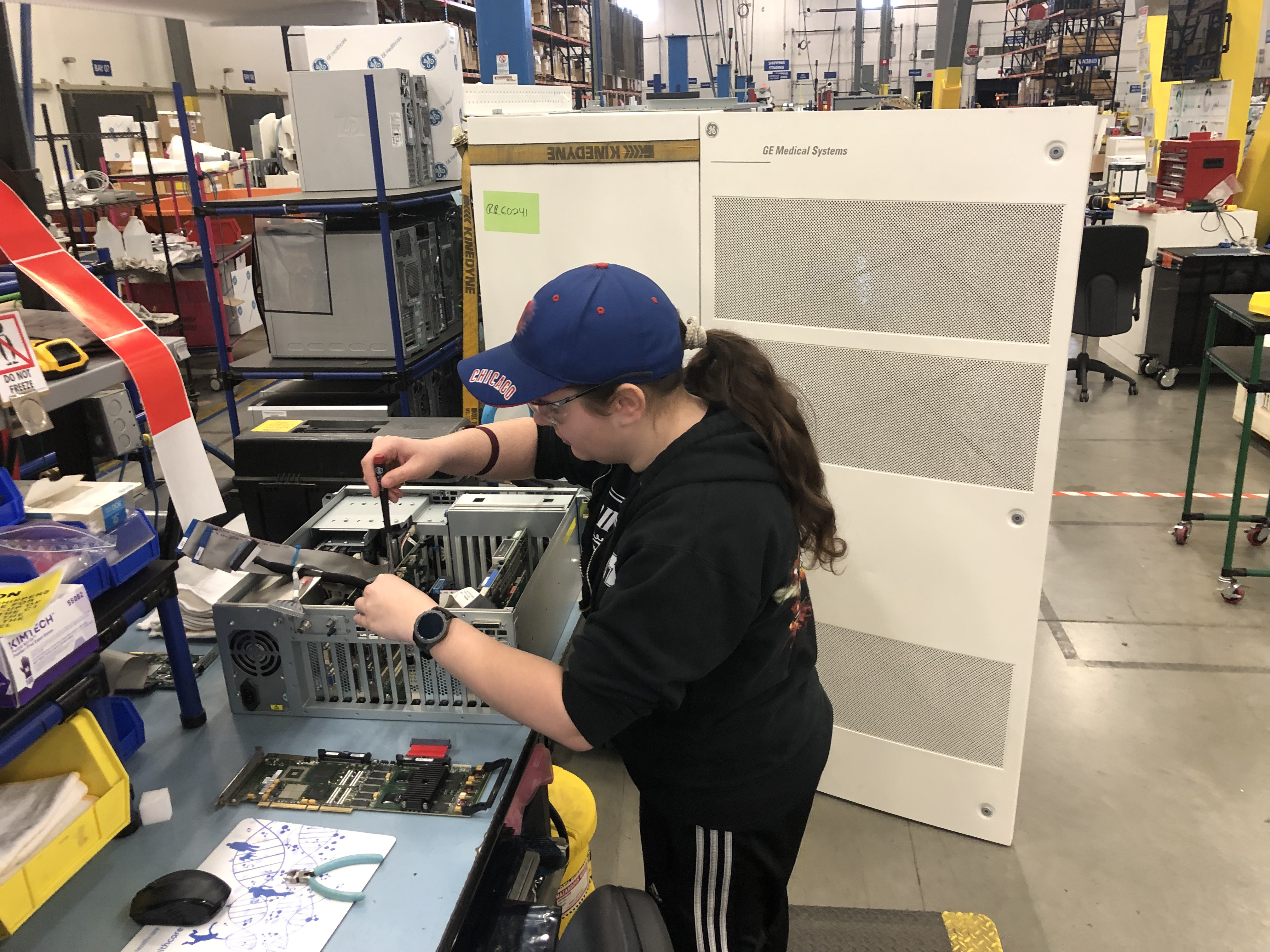Breathing new life into old medical equipment
After spending more than eight years in a hospital in Belgium, this Optima CT660 has reached the end of its useful life… or has it? GE Healthcare has reacquired the used CT scanner for its GoldSeal program. After undergoing an extensive inspection and testing process, this scanner is being refurbished by Murad Muhammad at the company’s Repair Operations Center in Wisconsin to meet its original system specifications. Its next buyer will save on the acquisition costs associated with new equipment and could use this device to scan thousands of patients for many more years.
By extending the useful life of medical imaging equipment, refurbishment is a form of reuse and waste reduction, contributing to a circular economy. Refurbishment also saves the energy and the materials required to produce new equipment.
Creating a more sustainable environment, one part at a time
Machines deemed not suitable for GoldSeal refurbishment are dismantled at end of life. After desirable components are harvested, as much of the residual material as possible is recycled. Depending on the system, anywhere from 82-100 percent* of a system may be recyclable.
Angela Ziccarelli is harvesting this computer from a 16-year-old Innova 2100. This specific component is no longer being manufactured, so replacement parts for systems still in operation around the world are scarce. First, the computer is inspected to determine its readiness for reuse. After the computer is inspected, tested and prepared to meet quality and reliability standards, it can be re-deployed as a reusable or a certified refurbished part to a scanner in need.
Rebuilding an MR around its magnificent magnet
These days, MR scanners are in use for an average of 15 years** before being replaced. However, an MR’s biggest and most important component – the magnet – could perform for much longer. For example, the life expectancy of a GE 1.5T magnet is >40 years. It makes sense to maximize the lifespan of each magnet, thereby minimizing waste of resources and materials that would be needed to produce a new one.
For eligible systems, GE Healthcare’s MR Continuum program helps reset the life of its MR scanners. Using the existing magnet, the program upgrades the hardware and software around it to create a premium performance MR platform. This is accomplished with minimal disruption and at a lower cost than replacing with an entirely new system.
REFERENCES
* Data on file.
** IMV 2021



